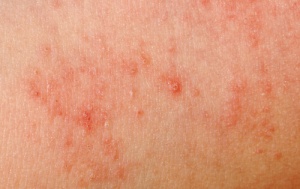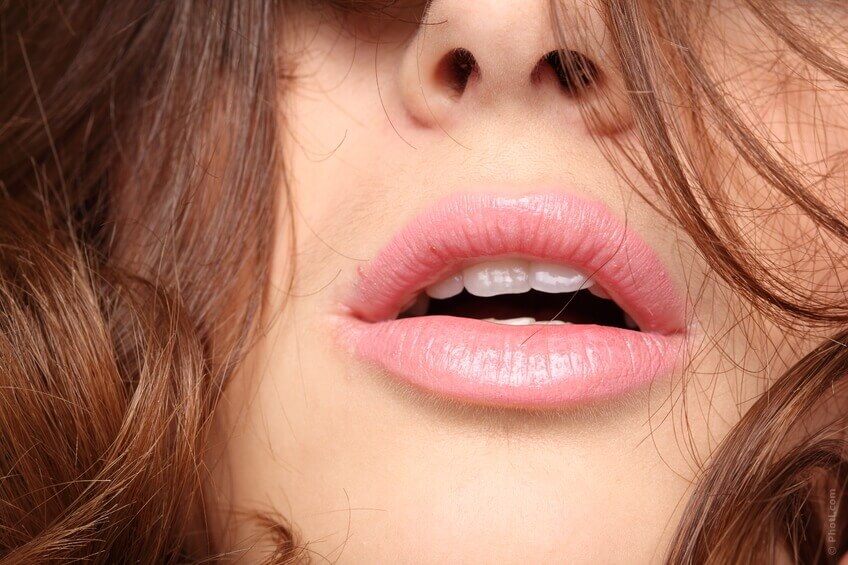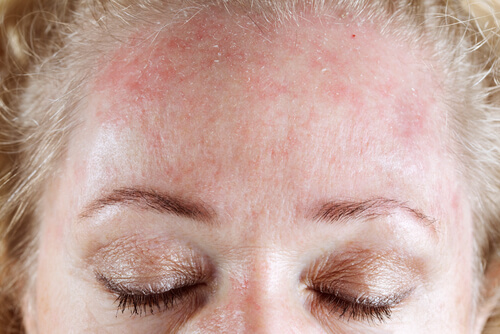The 10 Most Common Skin Allergies


Reviewed and approved by the doctor Maricela Jiménez López
Allergies can complicate your life in many ways, which is why it is important to pay attention to any reactions. Learn about the 10 most common skin allergies and how to identify them. Also, about the proper medication to prevent them from affecting you.
Perfumes and Fragrances
Perfumes and fragrances are one of the most common causes of allergies in adults and they continue to grow in number. These products include a large quantity of options: soaps, body lotions, shampoos, household cleaning items, wet towelettes, etc.
It is also possible that even those products that are labeled as “fragrance-free” can cause dermatitis. If you notice that a fragranced product causes you allergic reactions, switch to products with natural oils or unscented products.
Nickel
Another one of the common skin allergies that dermatologists treat the most is a nickel allergy. This metal is used to make costume jewelry, jewelry with gold, and piercings. The most common reactions are in your ears because of nickel earrings and can appear after the first contact or after wearing them a lot.
There is a wide range of products that use nickel: watches, glasses frames, clasps, buttons, belts, cuff links, etc. If you notice a reaction, try switching to jewelry that is labeled sterling silver, or for sensitive ears.
Latex
It is more and more common to have allergies caused by latex because the amount of products that use it as a base has grown considerably. This material is used to make gloves, balloons, clothing, hair ties, condoms, and many other products.
Some latex allergy symptoms are:
- Small welts
- Skin redness
- Difficulty in breathing
- Sometimes even vomiting
Hair Dye
Allergies from contact with hair dye are caused by sensitivity to p-Phenylenediamine (PPD), a common chemical in dyes that should be mixed with other substances before applying. To prevent discomfort from this allergy, you should do a sensitivity test as the package suggests.
PPD can also be found in other dyes, like temporary black henna. Symptoms can include itchiness, pain, and swelling.
We recommend: Henna: The Healthy and Natural Way to Dye Your Hair
Poison Ivy
Poison ivy is a very common herb that contains urushiol, an oil that causes allergy in most people. This allergy appears as outbreaks, blisters, redness, hives, and itchiness in your skin. Urushiol is a sticky substance, a characteristic that helps it spread.
The can be treated by washing the affected area with cold water and using non-prescription antihistamines. However, if you have any doubts, make sure to check in with your doctor.
Cloth and Fabric
Although many people think they are allergic to wool, this material, in its pure form, doesn’t cause allergies. In this case what happens is that the texture causes discomfort that can be confused with an allergy. Being allergic to certain fabrics is one of the most common skin allergies.
On the other hand, textile materials that cause allergies are from formaldehyde resin. This material is one of the basic components of elastic articles of clothing, evident from water, creases, and shrinking. The symptoms of formaldehyde allergy are burns, welts, and swelling.
If you experience these symptoms, buy clothing made of cotton, polyester, nylon, and acrylics that are free of formaldehyde. Sometimes, when the allergy is light, the symptoms will lessen after washing the piece of clothing a few times.
Makeup

Makeup allergies can be caused due to fragrances, although they tend to be caused by added conservatives. Many people experience skin irritation because it is a common problem, especially if your makeup is expired or poor quality.
However, if you constantly experience reddening, swelling, or outbreaks, you probably have an allergy to certain elements like formaldehyde, parabens, or thimerosal. If you experience any makeup allergies, you should stop using them. Over time, you can try some products gradually, until you find makeup that is good for your skin.
Also a great read: Homemade Makeup Remover for Sensitive Skin
Topical Medications
Antibiotic creams and ointments that tend to be used to treat cuts and other pains contain neomycin, an ingredient that can cause light to severe allergies. Medications that contain it can cause irritation or dryness to even welts to the area it was in contact with.
If you think that you are allergic to neomycin, you should see an allergist so that they can do a test and confirm it. If you have this allergy, it is important to tell your doctor so that he or she doesn’t use these products with you.
Sunscreen
The sunscreen that you use can cause the opposite effects of what you want if you are allergic to them and expose yourself to the sun. It may sound strange, but some chemicals used in these products negatively turn into allergens when they come in contact with the sun. This is one of the common skin allergies.
The chemicals that cause these allergies are benzoic acid, benzophenones, oxybenzone, salicylates, and cyclohexanol. Some skin types are more resistant and may not cause any discomfort or just slight pain.
In any case, in order to avoid any risks, look for a sunscreen that is free of these elements or made especially for sensitive skin. You can buy sunscreen for children or for babies because these are made especially to protect the skin. They also contain less harsh ingredients.
Household Products
Household products that normally cause allergies are the ones that contain solvents and adhesives. These are mainly the types of adhesives that are very strong and long-lasting. Some examples of these products are paint thinner, nail polish remover, and lighter fuel.
The majority of these products can cause irritation. However, sensitive skin can develop allergies if it is in contact with these products.
Learn to Identify the First Symptoms of Allergies
It is important to be aware of the first symptoms of common skin allergies. For example, these tend to include reddening, itchiness, burning, and small welts. If you see these symptoms, clean the area with water and neutral soap. You should also avoid any contact with what causes your allergies.
Finally, if the symptoms are very serious, you should see a dermatologist or an allergist.
All cited sources were thoroughly reviewed by our team to ensure their quality, reliability, currency, and validity. The bibliography of this article was considered reliable and of academic or scientific accuracy.
- Fundación Piel Sana (2017), “Alergial al níquel y sales de níquel”, AEDV. https://fundacionpielsana.es/wikiderma/alergias-al-niquel-y-sales-de-niquel
- Juan Vilaplana (2006), Dermatitis de contacto por parafenilenodiamina: una sensibilización con múltiples problemas. https://www.researchgate.net/publication/253285811_Dermatitis_de_contacto_por_parafenilenodiamina_una_sensibilizacion_con_multiples_problemas
- Asthma and Allergy Foundation of America (2015), “Latex allergy”, https://www.aafa.org/latex-allergy/
-
Monash University. “Immune breakthrough: Unscratching poison ivy’s rash.” ScienceDaily. ScienceDaily, 23 August 2016. <www.sciencedaily.com/releases/2016/08/160823103242.htm>.
This text is provided for informational purposes only and does not replace consultation with a professional. If in doubt, consult your specialist.









